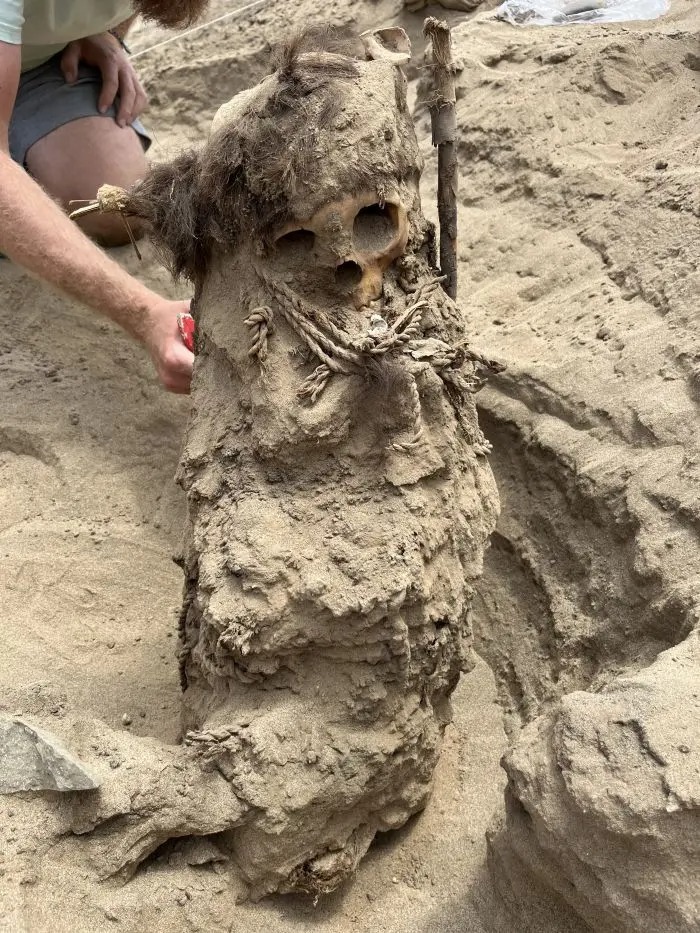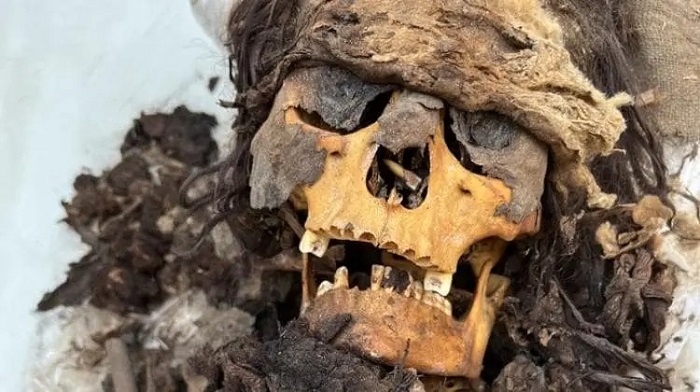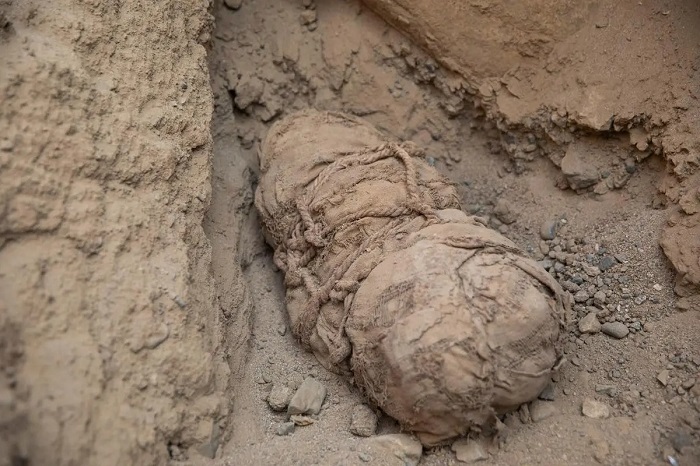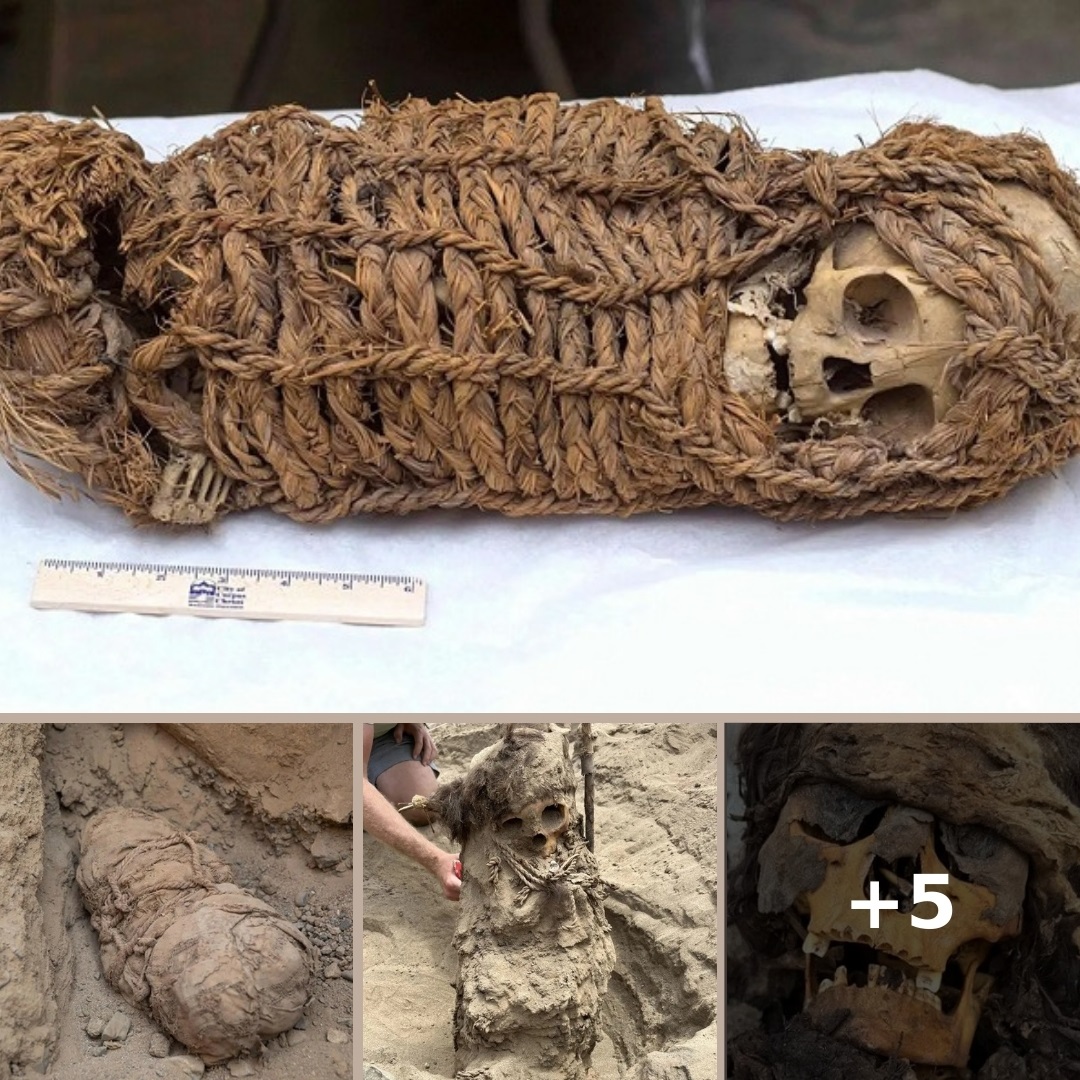In a recent groundbreaking discovery, Peruvian archaeologists have unearthed a trove of 22 mummies, predominantly consisting of children and infants, bundled together in a manner that has left experts profoundly perplexed. This revelation, found in a remote archaeological site in Peru, has sparked a wave of intrigue and raised numerous questions about the cultural and historical context of these ancient remains.

The site, located in the highlands of Peru, is believed to date back to a pre-Incan civilization, possibly around 1,000 years old. The mummies were discovered in tightly wrapped bundles, each meticulously preserved with layers of textiles, which is characteristic of ancient Peruvian burial practices. However, the sheer number of young individuals found together in such a fashion is unprecedented and has led to intense scrutiny and analysis.
Initial examinations suggest that these mummified remains were part of a mass burial, possibly linked to a significant event or ritual. The bundles were found in what appears to be a communal grave, a practice not uncommon in ancient Peruvian societies, but the concentration of children and infants is highly unusual. The condition of the mummies indicates that they were carefully prepared for burial, with some bundles showing signs of elaborate wrapping and adornment, suggesting they were of considerable importance.

Several theories have emerged as to why these children and infants were buried together. One hypothesis is that they were victims of a catastrophic event, such as an epidemic, famine, or natural disaster. In such a scenario, the community may have buried the deceased en masse due to the high mortality rate and the need for a swift burial.
Another possibility is that these children were part of a ritualistic sacrifice, a practice known to have been carried out by various pre-Columbian civilizations in the Andes. Sacrificial rituals often involved offering children to the gods to appease them or to ensure agricultural fertility, health, and prosperity. The presence of ceremonial items found with the bundles supports this theory, indicating a possible religious or ritualistic context.

The discovery has also prompted a deeper investigation into the social and cultural dynamics of the ancient society responsible for these burials. Researchers are keen to understand the societal norms, beliefs, and practices that led to such an extraordinary burial site. The textiles used in wrapping the mummies are being studied for their weaving techniques, patterns, and dyes, which can provide insights into the cultural and economic aspects of the civilization.
DNA analysis and other modern forensic techniques are being employed to learn more about the health, diet, and genetic backgrounds of the mummified individuals. This information could shed light on the living conditions, origins, and possible reasons for the high child mortality reflected in the burial.

The findings have captured the attention of the global archaeological community, as they offer a rare glimpse into the lives and deaths of ancient Peruvian societies. The mystery surrounding the mass burial of children and infants continues to fuel scholarly debate and public fascination, highlighting the complex and often enigmatic nature of human history.
As investigations proceed, the researchers remain dedicated to unraveling the full story behind these 22 mummies. Their work promises to contribute significantly to our understanding of ancient Peruvian cultures and the broader tapestry of human civilization. Each new piece of evidence brings us closer to deciphering the reasons behind this poignant and perplexing burial, offering valuable lessons about life, death, and the rituals that connect them in the ancient world.

